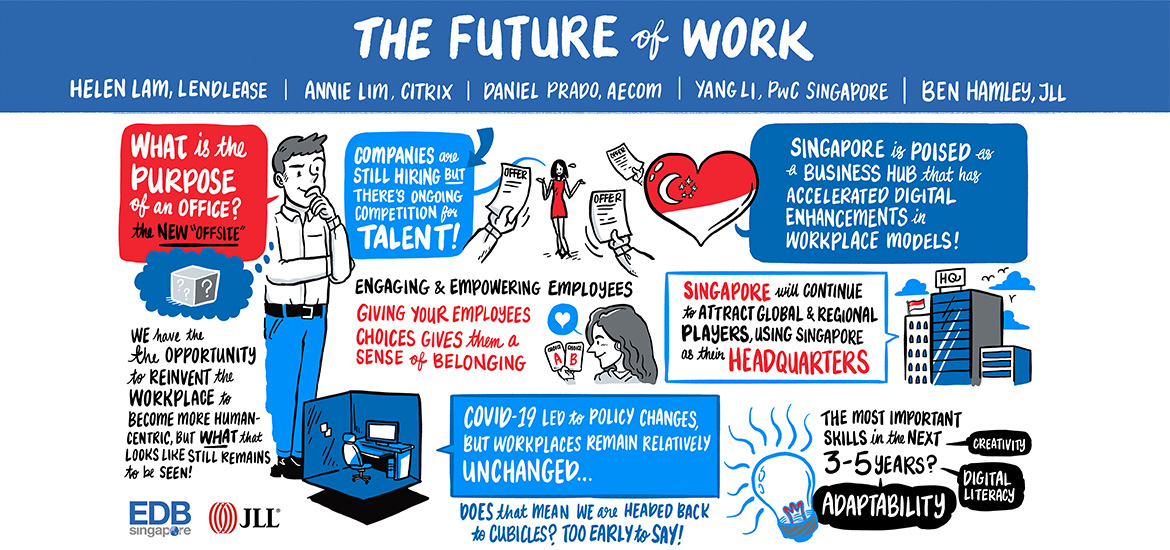- Businesses globally will see an evolving purpose of the office as the future of work pivots around health and wellness, technology and flexible work arrangements.
- Regional headquarters will continue to bring value to businesses and the hub model won’t change substantially in the near term.
Against the backdrop of a global pandemic, the future of work quickly transformed into a new standard of work.
Companies switched to remote working arrangements, and technology enabled new levels of connectivity. At the height of the pandemic across Asia Pacific, an average of 68% of employees surveyed by JLL worked from home, with Singapore leading at 81%.
Is remote working here to stay however, and how does this impact the other forces that make an organisation? In a webinar organised by the Singapore Economic Development Board and JLL, panellists discussed the various dimensions shaping work today.
